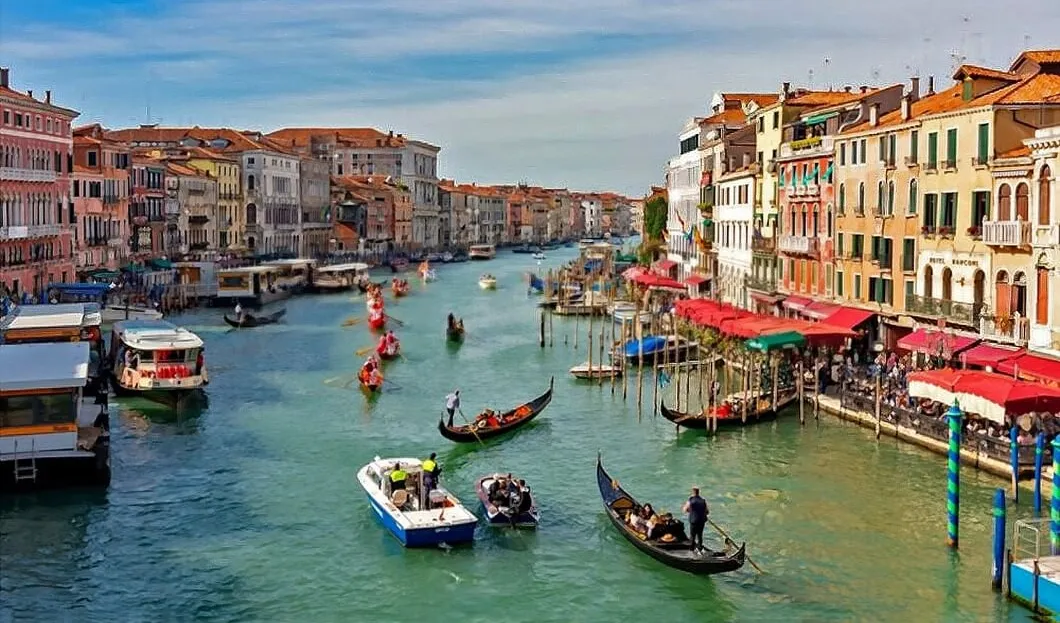
This summer the municipality of Venice announced that a paid ticket would be introduced from 16th January 2023 to enter the historic center and islands of the lagoon: the provision, unprecedented in a city of this huge importance, had the aim to contain the number of tourists arriving every day, currently in the tens of thousands.
However, forecasts of the time frame for implementing this plan have proved too optimistic. Indeed, the municipality has postponed the start of the restrictions until next summer without saying the exact date.
In recent months, the promoters of this measure have realized that closing a big and unique city like Venice is more complicated than expected: there are rather significant technical, legal and political obstacles that will have to be overcome in the coming months.
In recent years, although the events like the high water of 2019, the most serious problem of Venice has not been the tide, but the tourists. For several years, the presence of tens of thousands of people crowded into the calli or main squares of the historic center, the so-called campi, has forced administrators and inhabitants to question the sustainability of this tourism’s model based mainly on quantity. And the transformation of the historic center into a sort of theme park, both for the use and consumption of tourists, has led many experts to speak of the Disneyzation of Venice.
The reports confirm that the fears are well-founded: during All Saints long weekend, the presence of at least 450,000 people was registered, over 100,000 a day. It was no exception: 145,000 visitors were reported at Carnival, on the Saturday before Easter there were 160,000 tourists in Venice and 140,000 at Easter. However, there were many arrivals during the summer, the first after the restrictions’ removal introduced to prevent Covid.
Long before the pandemic blocked the arrival of tourists from all over the world, in Venice many residents’ associations had denounced the effects of tourism on the city and on the people who live there. In 2008 the inhabitants of the historic center of Venice were 60 thousand, today according to the latest surveys they are around 50 thousand. “The most important problem of the city is the excess of tourism: 20,000 residents left the center between 2000 and 2019,” Venice’s prefect Vittorio Zappalorto said during a hearing before the environmental commission of the Chamber.
The touristification of Venice has been stimulated by the significant increase in lodgings, houses and rooms, rented for short periods thanks to platforms like Airbnb. Data released by Inside Airbnb, an independent project that measures the impact of short-term rentals in many cities, says 7,780 Airbnb accommodations were available across the city as of June 5, of which 77 percent were entire homes, 20.1 % rooms, 2.6% hotels that also place rooms on the platform and 0.3% shared rooms. The average price per night is 243 euros and the average annual income of tenants is just over 11,000 euros.
Airbnb a Venice

Over 800 lodgings are occupied for over 240 days a year. Just over 20 % of active tenants manage 60 percent of the ads, even 5 percent manage over 30 % of the ads.
In addition to competing with hotels, the accommodations made available on Airbnb have contributed to increasing the cost of rentals, with a dynamic similar to what happened in many other European cities. Nowadays, living in Venice is much more expensive than it was ten years ago, which has contributed in part to depopulation and consequently to transforming shops, services and the general situation of the city.
Last July, the Parliament approved an amendment, included in the Aid decree, in order to allow Venice to limit short-term rentals. The approval of a national law was necessary because local authorities do not have the power to limit the short-term rental market: the Parliament granted this privilege only to Venice, even though Bologna and Florence had asked to be included in the law. The municipality has not taken advantage of this possibility yet because, in recent months, it has worked above all on the introduction of the entrance fee, without being able to respect the commitments made.
On 1st July, the Council approved the first draft of the entrance fee regulation in order to establish a series of rules. First of all, the price is not fixed: it ranges from a minimum of 3 euros to a maximum of 10 euros. The price difference will be decided on the basis of entry thresholds that trigger the increases. Basically, on those days when people are expected to arrive, the ticket will cost more; while on days with less attendance the price will be lower.
The municipality has not decided on the thresholds yet, which will be approved with a new regulation: according to several reconstructions, the maximum price of 10 euros would trigger between 20 thousand and 30 thousand tourists. The final purpose is to limit the presence of daily tourists, or rather those who arrive and leave during the day without sleeping in the city.
The entrance ticket to Venice will be bookable on an online platform. After the payment, it will be possible to download a QR Code, just like public transport, to be shown in case of checks. The penalties range from 50 to 300 euros, depending on the violation, from failure to show the ticket to making false statements in order to obtain exemptions from payment. The checks will be carried out, randomly, by at least nine teams of controllers. On the occasion of appointments such as Carnival, long weekends or holidays such as Christmas or Easter, there will be 15 teams for a total of 30 controllers.









